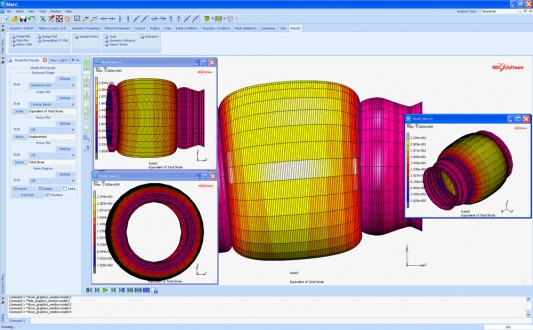One step closer to reality-based design, where aesthetics, form, and function are all created in a single design environment instead of automation silos.
MSC Software Corp. has released a GPU-accelerated version of Marc 2012 Finite Element Analysis. MSC claims using Marc 2012 with Tesla-class GPUs from Nvidia can accelerate engineering simulations by a factor of from two to six times, when compared with the non-accelerated version of Marc.

Marc is a popular general-purpose, advanced nonlinear and multi-physics solution that accurately simulates the response of a range of products under static, dynamic and multi-physics loading scenarios. It enables engineers to simulate complex real-world behavior of mechanical systems, including automotive and aerospace components, oil and gas drilling equipment, construction machinery, and medical devices, to solve complex manufacturing and design problems within a single environment.
Marc 2012 supports single- and multi-GPU system configurations, and is available for x86-based Windows 64-bit and Linux 64-bit systems.
Seeking reality-based design
Adding GPU acceleration to Marc is one more step toward the goal of creating CAD/CAE software that provides reality-based design—the merger of engineering geometry with real-world look and action. For years the tendency has been to separate design from analysis and simulation, creating workflow discontinuity. Basic design in one place, aesthetic design somewhere else, and simulation/analysis in a third place. Now engineering software vendors and workstation ISVs are taking advantage of the new computational horsepower available in GPUs, as they work together toward the goal of having one design environment. Specialists can still work on their particular part of the project, but as part of a unified streamlined workflow.





